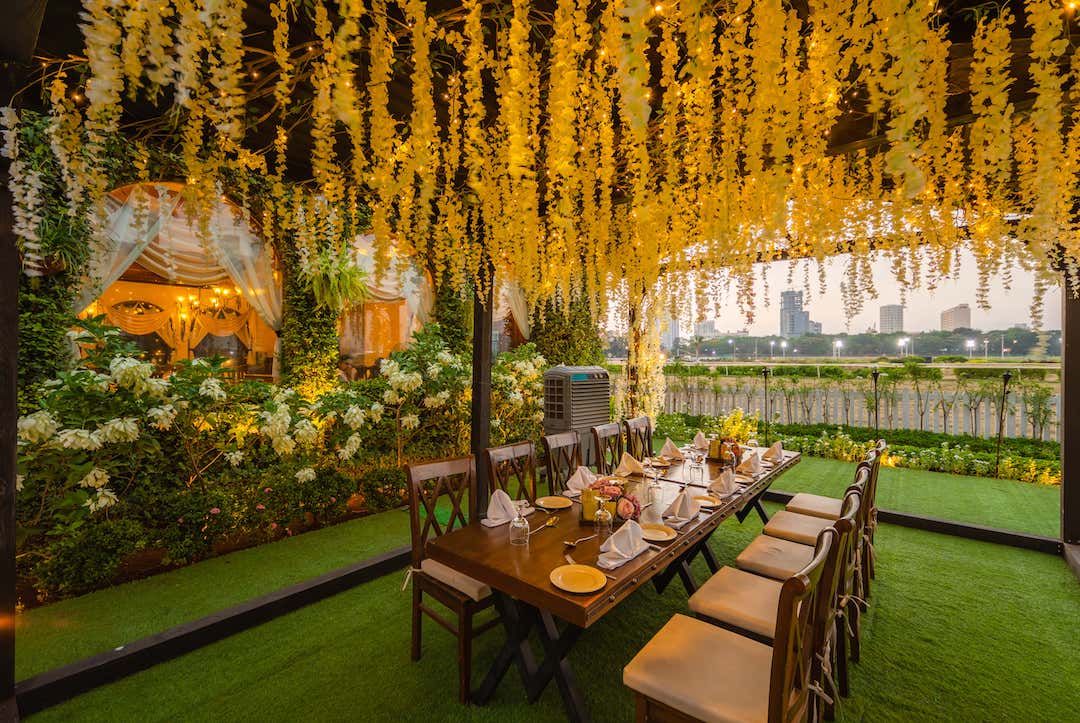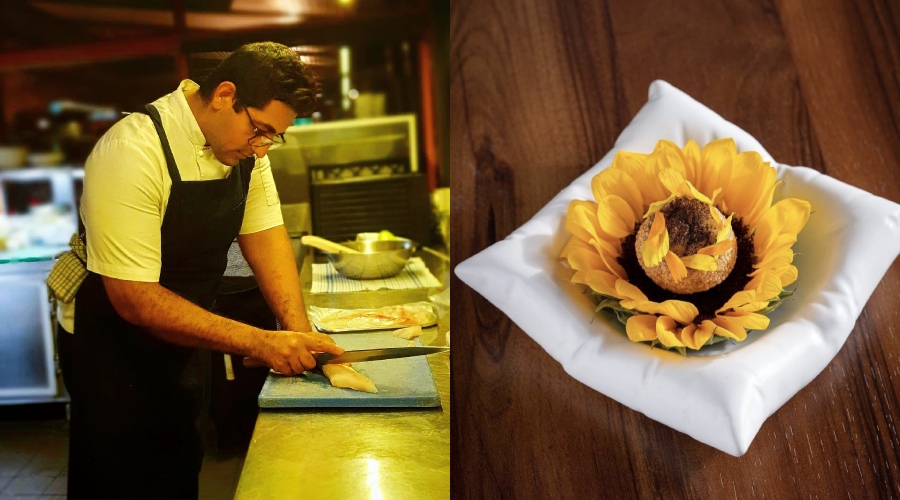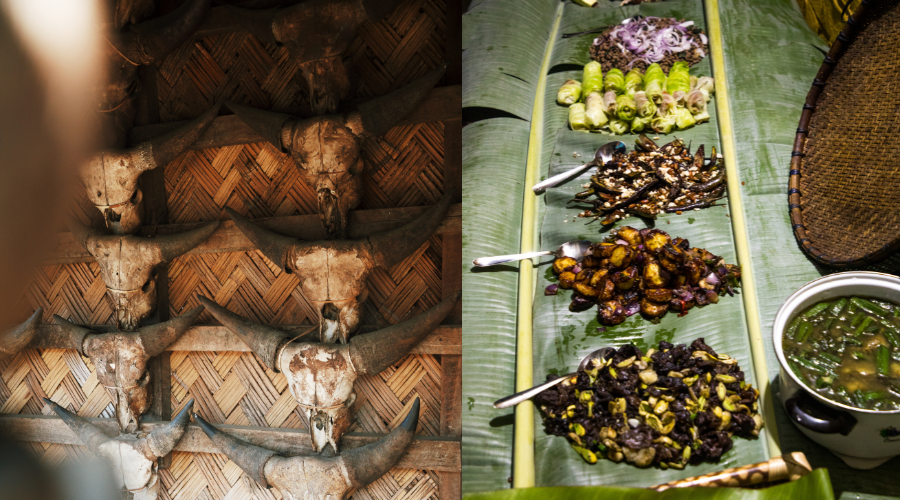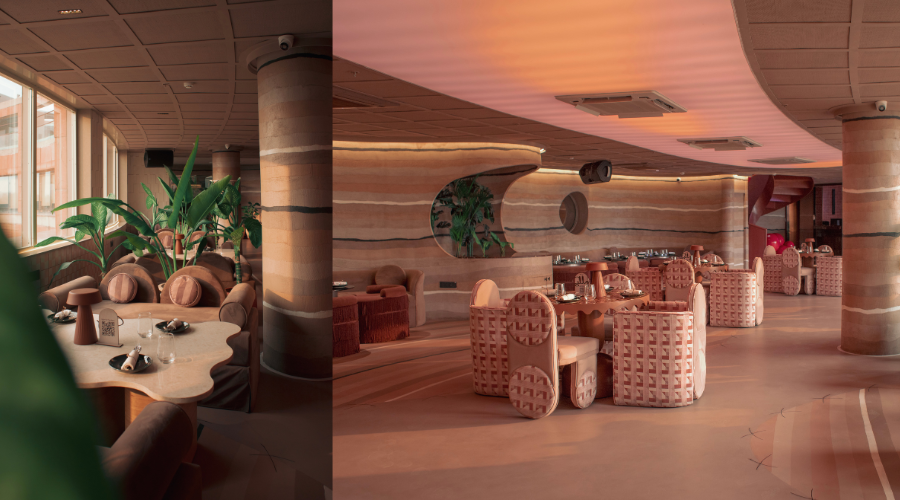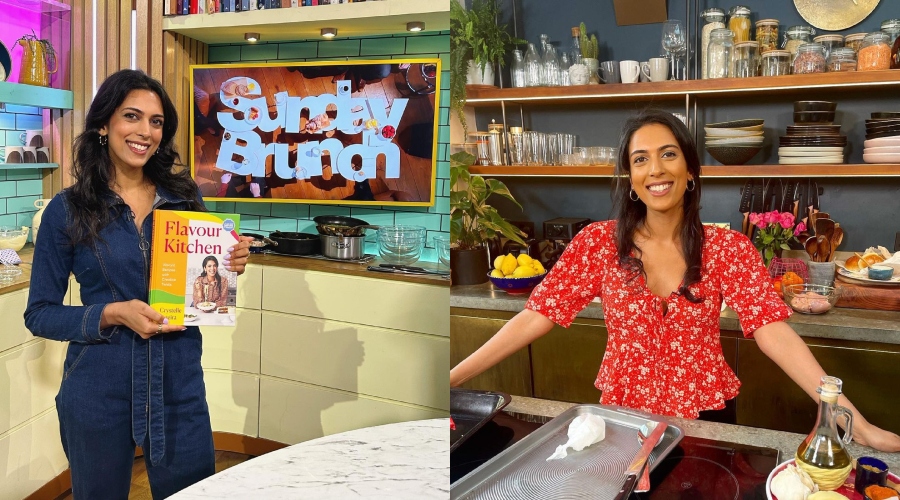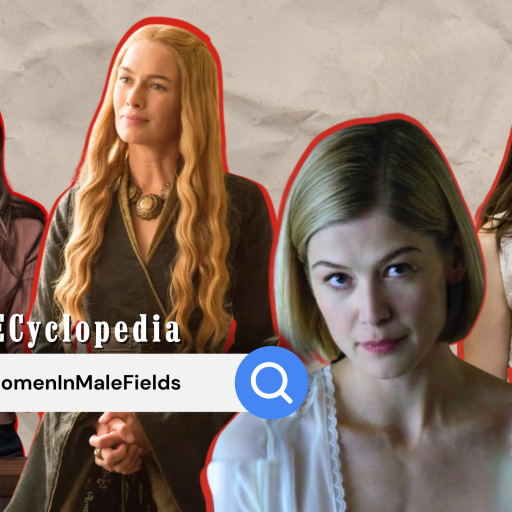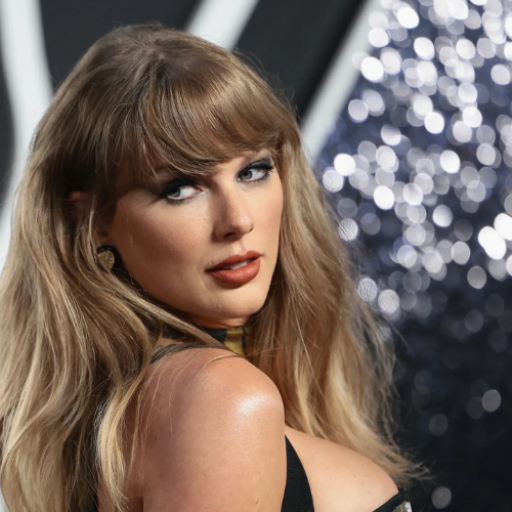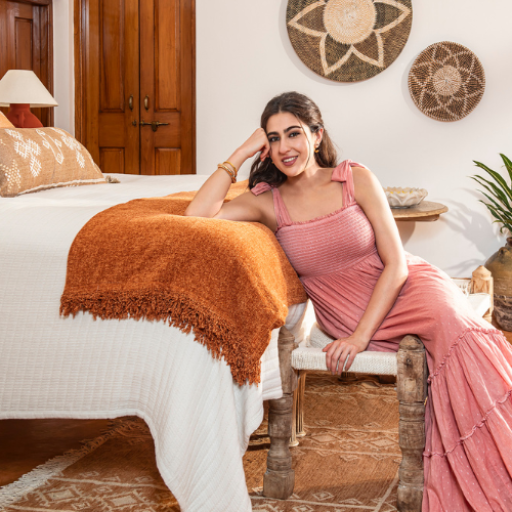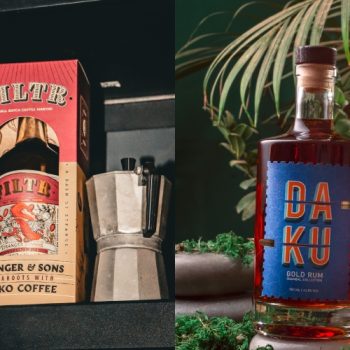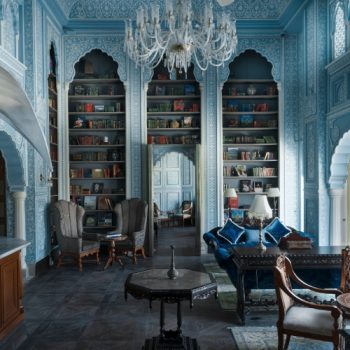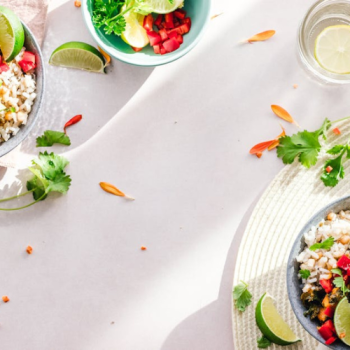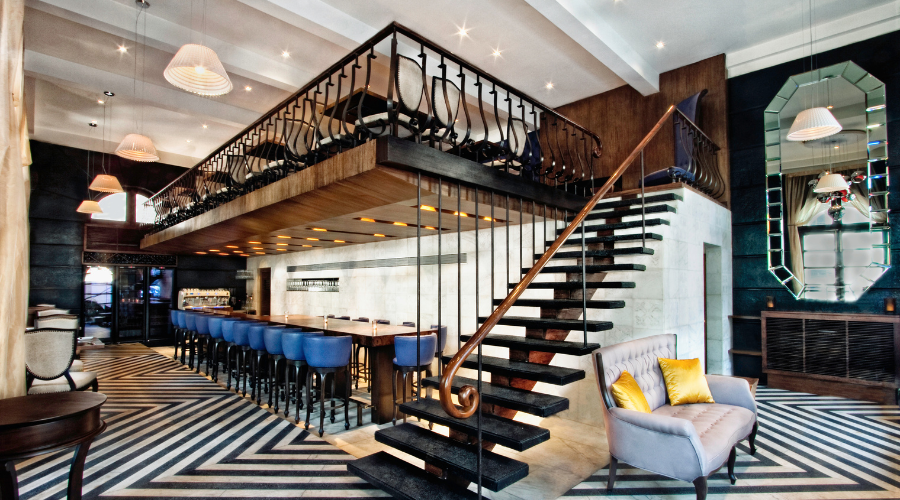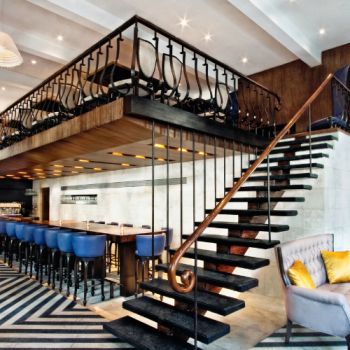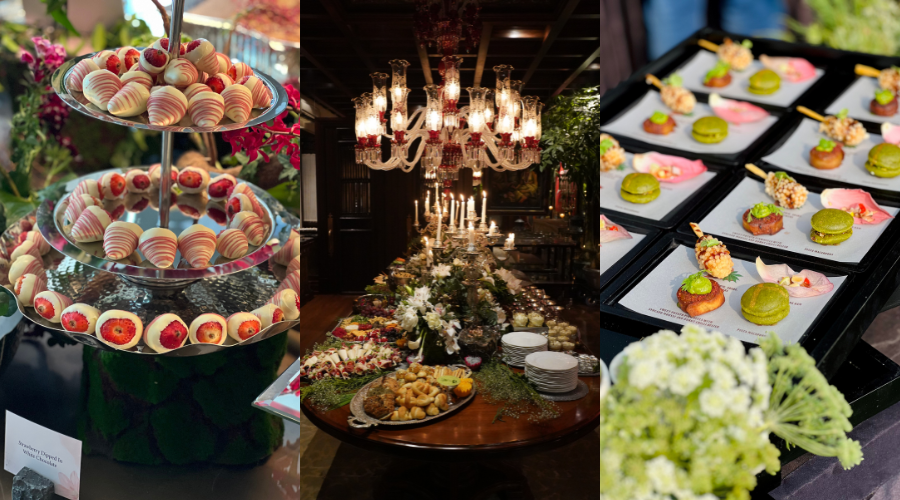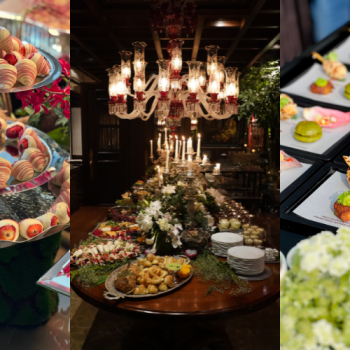Born in North London to Kenyan-born, Portuguese-Goan parents, Crystelle Pereira grew up watching her mum cook curries by the kitchen stove. She was the only one out of the three sisters who developed an interest in cooking and flavours always fascinated her. Although she went on to pursue a career in finance, she would always experiment with various recipes at home, jot them down and text it to herself. During the lockdown, she found an inclination towards baking when her sisters asked her to make some bread and cake for them. And once she realised she had the knack for it, the interest only grew further and reached the level of cake decorating. That’s when Pereira’s family told her to apply for Netflix’s Great British Bake Off. And so she did.
Crystelle appeared on GBBO in 2021 and became known on the show for showcasing recipes from her Goan heritage. Her innovative recipes and skills brought her to the finals. Although she didn’t take the title of the winner that season, Crystelle won the hearts of so many people from the South Asian community–representation matters in the culinary world too!
Fast forward to 2023, Crystelle Periera has now launched her very own recipe book, Flavour Kitchen with an aim to encourage cooking enthusiasts to not be afraid of experimenting with ingredients and flavours. Ahead, the chef and author chats with ELLE about her new book, her culinary journey and more.
ELLE: Congratulations on your new book. Tell us more about it.
Crystelle Pereira (CP): The best way to describe Flavour Kitchen is it’s me in a book. It encapsulates everything I love about cooking, which is primarily flavour. I always think of the flavour combination first and those combinations are either inspired by my Goan heritage or it’s taken from dishes I’ve had from around the world. Once I have a favourite combination, I then think of a vessel or a dish to put it in. My book is divided into savoury and sweet, and then within that you’ve got breakfast, lunch, dinner, party food, cakes, etc. But the main premise of the book is basically to get people comfortable with just pushing the boats out with their flavours in an accessible way. It shows people that adding a pinch of cardamom to your cheesecake or miso to your marinade can transform the dish. All these ingredients are versatile and so I want those to become the new store cupboard essentials instead of mayo, mustard and ketchup, which are commonly used by people in the UK. I want people to become comfortable with adding interesting flavours to their dishes and create something new and original with their food.
ELLE: What Goan recipes have you included in the book?
CP: There are a handful of Goan dishes and that was something that was really important to me. My Goan food is a big part of who I am and I know that I did some Goan curries on GBBO that did really well. So there’s a Goan egg curry, my late grandma’s pickle chicken curry (the dish I made on the show that everyone loved), chickpea potato curry, Goan chicken chilli fry, among others. Some of them are naturally vegan whereas for some of them, I’ve actually added notes where you can veganise them. For instance, the egg is very easy to swap with tofu for the curry. With the chicken chilli fry you can easily swap out the chicken with a vegan protein source.
My mum used to make this Goan dish with cabbage and coconut and I’ve turned those into fritters. We usually make this Goan potato bhaji curry, so I turned them into stuffed potato skins based on the concept of American loaded potato skin but the whole potato is basically full of this lovely fragrant potato bhaji drizzled with coriander chutney. There’s dhokla inspired cornbread muffins. In sweets, there’s Chai Tres Leches and Ras Malai bread and butter pudding. So it’s a mix of traditional and fusion dishes with a really big representation of Goan and more broadly Indian flavours in the book.
ELLE: What did you learn from your mum in terms of cooking when you were growing up and how did that translate into your recipes?
CP: Food is such an integral part of South Asian culture. When we had guests, there wouldn’t be only rice and curry. We would prepare a whole spread of varying items. And so I’ve grown up being surrounded by food, not only in my own home, but also at my aunt’s house. The spice cupboard is full of different spices. The freezer is full of frozen curry leaves and herbs. Food was around me all the time.
When I used to watch my mom cook curries, she would always offer me a spoonful of it. As time passed, she started giving it to me to taste it and check whether it needed any salt or sugar. This way, my mom helped me develop my palate. It was from her that I learned to add jaggery or something sweet to savoury dishes because actually adding a bit of sweetness to savoury dishes brings out the flavour and vice versa. When she was making a curry, she would add tamarind or lemon juice to cut through the richness of a coconut. That is how I developed my palette for Goan food and flavours. As I got older, I started travelling, going to different countries and got acquainted with different flavours. When I went to Japan, I discovered miso. I went to South Korea and discovered Gochujang. I tasted zataar in a London restaurant, came home and created zaatar topped hummus. That’s how my cooking snowballed, and I started making more.
ELLE: We all know the immense love you have for miso. When did this love affair begin?
CP: I love Pan Asian and particularly Japanese food. When I went to Japan with my mom, we had such incredible food featuring miso. It’s such an incredible ingredient and I brought some back home to make miso soup. One day, I remember thinking of miso’s properties–it’s very salty and umami. It’s essentially salt on steroids. So I tried adding it to a marinade and mixed it with a bit of maple syrup to offset the saltiness there. If it’s just salty umami, surely I can add it to caramel and to my surprise, the flavours worked! I now use it almost as an alternative to salt. I add it to cookies, apple pie and caramel but I also add it to all my savoury food as well. I just became so fascinated by how versatile it was. And that’s what I love doing–come up with creative flavour combinations that people wouldn’t typically think of but actually work. As someone who has been brought me up to never waste food, one of the many things that I love about miso is how versatile it is, and I have talked a lot about its versatility and multiple applications in my book.
ELLE: How did the Great British Bake Off shape you as a chef?
CP: Massively! I’ve always had a massive passion for cooking and baking. I didn’t think I would even get on the Great British Bake Off, let alone reach a final. But one thing that I’m so proud of myself for doing is I went on a show that is quintessentially British and showcased flavours from my heritage and from around the world. I didn’t do things traditionally but that seemed to get a really good response. The amount of people that have made my chicken curry has been so rewarding.
The show gave me this platform and voice as someone who is really into her flavours. The amount of people that messaged me saying it’s so nice to see some Asian South Asian representation on the screen for me has been incredible. A lot of industries, especially in media, are dominated by white men. So to be a South Asian woman showcasing flavours from my heritage and also from around the world is so powerful. But it’s also been such an incredible springboard to be able to write a cookbook, be able to cook on TV in the UK and America, I’ve also met royalty. There have been so many incredible things that happened that I just never ever would have imagined before the show. So I will be eternally grateful to the show for basically opening all these doors to me and pursue a full time career in food.

